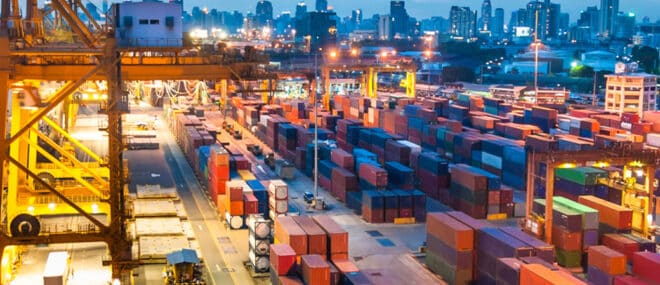While many fleet collisions are ultimately accidents that are unavoidable, there are some that are preventable. A preventable collision occurs when the driver fails to do everything they possibly could have to prevent or avoid the collision.
We’ve outlined ten different classes of preventable fleet collisions below, and some tricks and tips for how you can avoid them.
1. Backing Collision
Backing into a parking spot or reversing out of one safely is entirely the driver’s responsibility. Backing up can become very dangerous if the driver neglects to ensure the way is clear, before and during the entire movement. Make sure you are always aware of your surroundings, and consistently checking your blind spots.
2. Intersection collisions
Unfortunately, stop lights, stop signs, and following the “right-of-way” does not automatically protect you against collisions with others on the road who aren’t as diligent or vehicles on the road that are on their way to an emergency (like ambulances). It is important that all drivers scan intersections multiple times before entering them to ensure safety.
3. Rear-end collisions
Striking the vehicle in front of you is usually preventable. Foresee and avoid collisions by controlling your speed and maintaining sufficient following distance so that you can suddenly stop, if necessary. Watch the traffic situation ahead and behind of your vehicle so you can anticipate the need to stop or move.
4. Traffic lane encroachment collisions (sideswipes)
This type of collision generally results from passing, weaving, squeeze-plays, shut-outs, or entering a line of moving traffic, and is usually caused by encroaching on the right-of-way of another vehicle. It is important for drivers to keep an adequate amount of space on all sides of the vehicle, use the appropriate lane, and stay aware of the movement of the vehicles around you.
5. Collisions resulting from mechanical failures
Fleet managers should ensure that all of their vehicles are part of a maintenance program, and that all issues identified by the program are repaired instantly. Make sure that any mechanical failures reported by your drivers are also addressed immediately.
6. Collisions with rail vehicles
Trains and street cars always have the right-of-way because they run on fixed tracks and need greater braking distance than rubber-tire vehicles. Ensure that you’re aware of all regulations about unguarded crossings in the regions they operate in. At an unguarded crossing, watch and listen for trains and never go past lowered crossing arms.
7. Collisions with stationary objects
Collisions that involve hitting buildings or scraping/striking curbs, buildings, signs, trees, posts, bridges, parked vehicles, and overhead obstructions are normally a result of a driver who is not familiar with their vehicle size or turning radius. Make sure that you are knowledgeable about the weights and dimensions of your fleet, and use dispatch tools and geo-fencing to prevent drivers from going into tight or low areas unless absolutely necessary.
8. Pedestrian collisions
You need to be fully aware of where pedestrians are at all times. Ensure that your vehicle has the mirrors adjusted to cover as many blind spots as possible. When approaching intersections, look closely for where pedestrians are and how they are moving.
9. Loss of control collisions leading to rollover and jack-knife
Rollovers are usually a result of one or more tires leaving the lane of travel, throwing off the vehicle’s center of gravity causing the driver to lose control of the vehicle. Distracted driving, falling asleep, using a handheld device, sudden swerving, and excessive speed are a few contributing factors to the driver losing focus and/or control. Proper driver training and technology like lane departure warning are keys to preventing these types of collisions.
10. Adverse weather collisions
Rain, fog, snow, sleet, or icy pavement are usually not the main cause of collisions but are an additional hazard that needs to be managed. Otherwise it can create an unpredictable situation. Ultimately, these collisions can be prevented by driving according to the conditions or not driving at all if the risk is high. Some other elements that can help avoid these collisions include researching the weather on the route before heading out, reducing speed, installing chains (where allowed), and applying sand on the road as an alternative to salt.
The key to prevention of collisions
The best way to prevent fleet collisions is to ensure that all drivers have defensive driver training. Investigations usually reveal that drivers involved in a collision weren’t driving defensively prior to the collision. A defensive driver tries to recognize potentially hazardous situations in advance in order to properly time when to safely maneuver around them.
Ensure that you’re protected
Unfortunately, not all types of collisions are preventable, and accidents still do happen despite your best efforts. That’s when insurance can be helpful. To learn more about how a tailored policy can help protect you, your employees, and your bottom line, visit our Transportation & Logistics Services Insurance page today!




